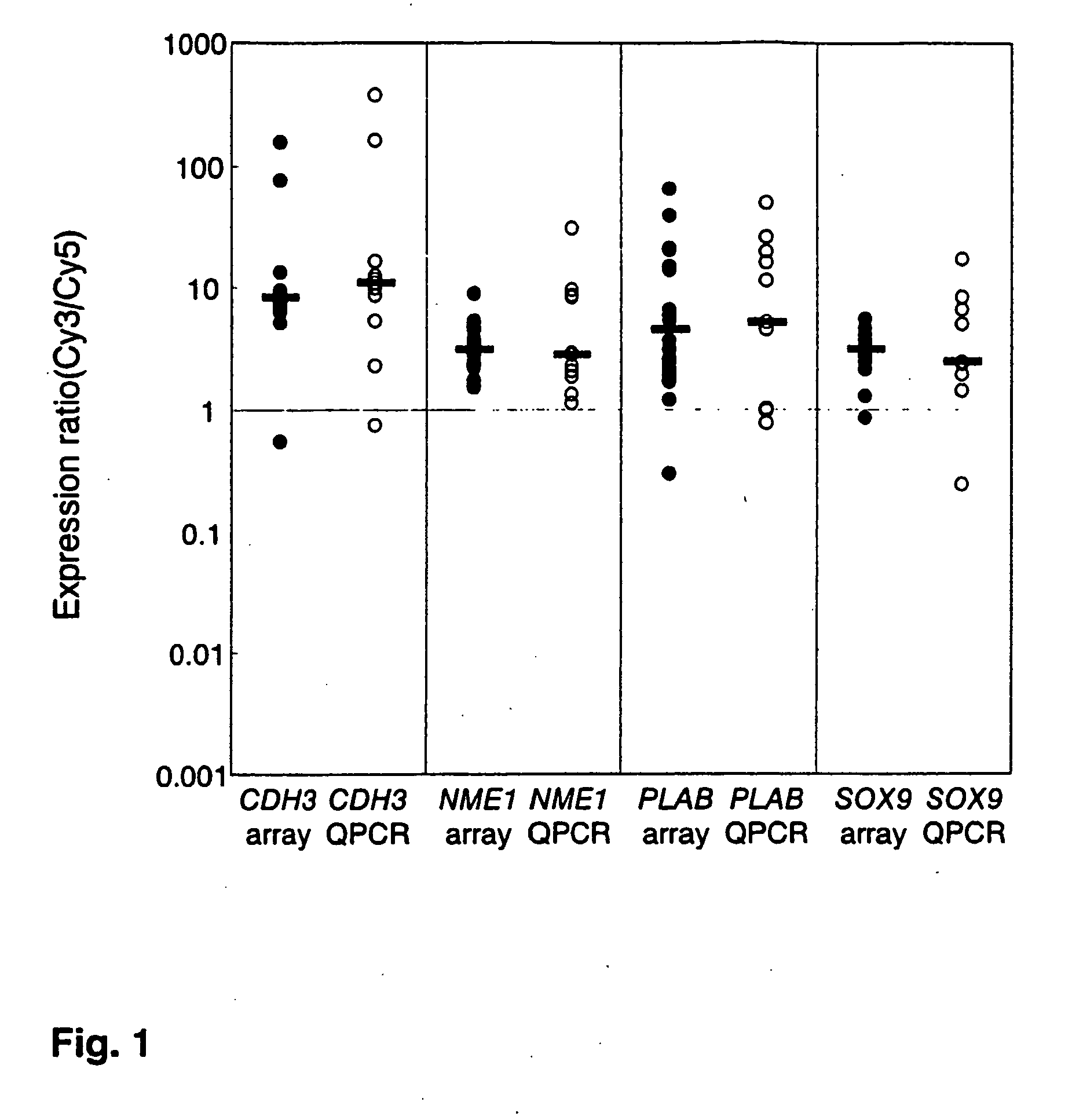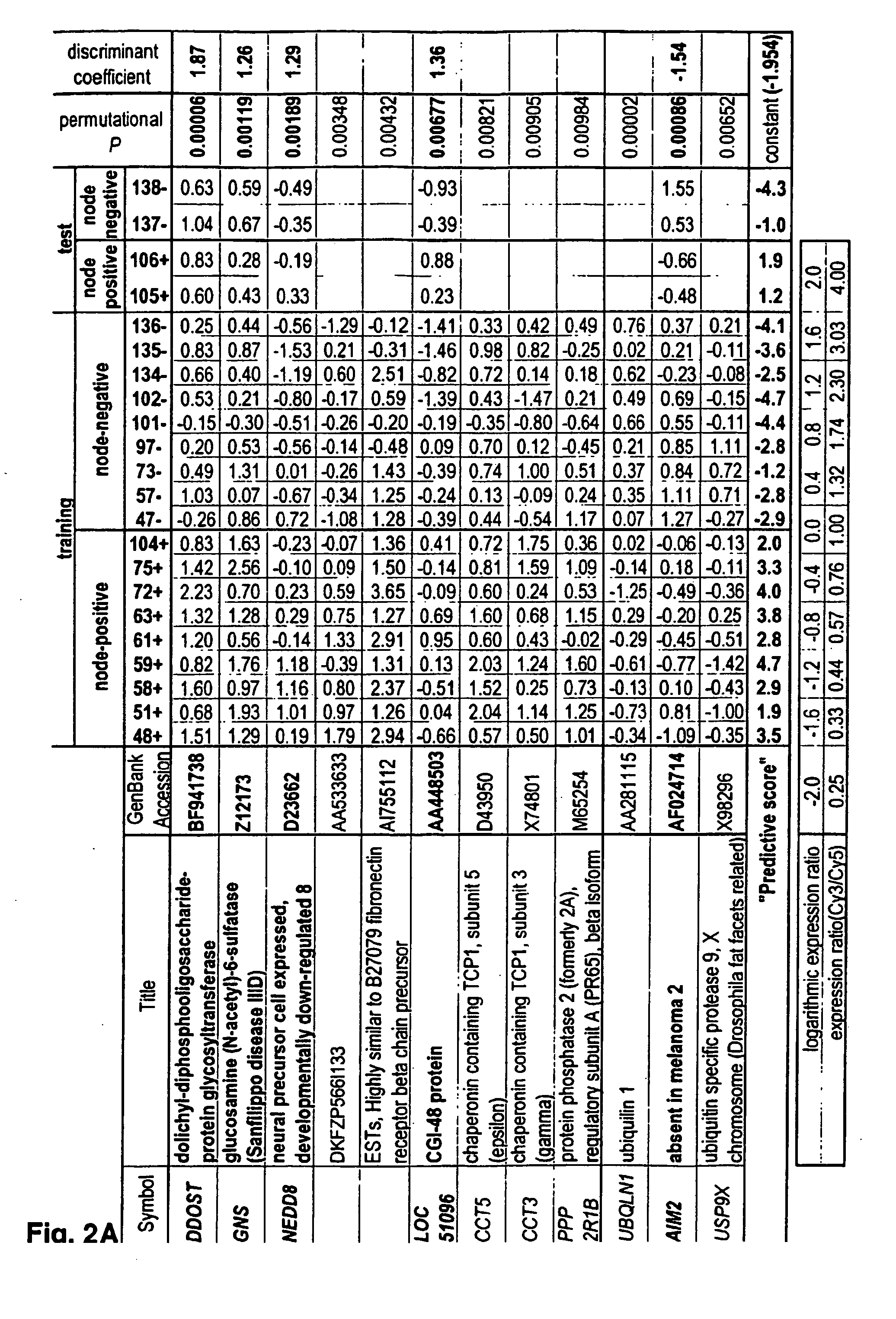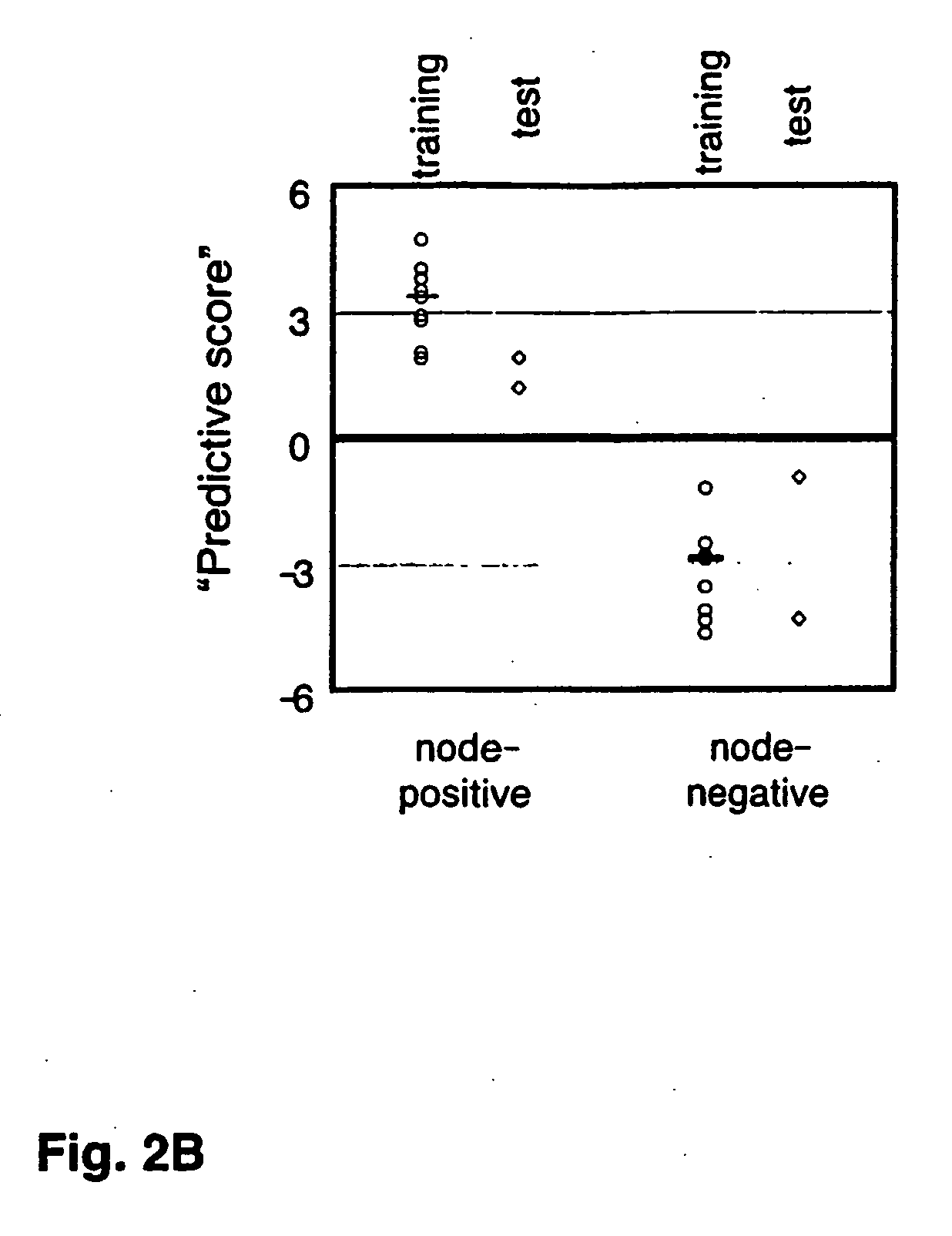Method for diagnosis of intestinal-type gastric tumors
a gastric tumor and intestinal type technology, applied in the field of cancer research, can solve the problems of unsatisfactory chemotherapy and poor prognosis of advanced gastric cancers
- Summary
- Abstract
- Description
- Claims
- Application Information
AI Technical Summary
Benefits of technology
Problems solved by technology
Method used
Image
Examples
examples
[0118] Prior to the present invention, knowledge of genes involved in intestinal-type gastric tumors was fragmentary. Herein, expression profiles of metastatic and early stage lesions of the intestinal-gastric mucosae were examined and compared to provide information about genes that undergo altered expression during progression to metastasis. The data described herein provides genome-wide information about how expression profiles are altered during multi-step carcinogenesis.
[0119] Specifically, to determine genetic mechanisms that underlie development and / or progression of intestinal adenocarcinoma, gene expression profiles of cancer cells obtained by laser-capture microdissection of 20 intestinal-type gastric tumors were compared with expression of genes in corresponding non-cancerous mucosae, using cDNA microarray consisting of 23,040 genes. 62 genes were found to be consistently up-regulated and 76 were consistently down-regulated in cancer tissues tested. Altered expression of...
PUM
| Property | Measurement | Unit |
|---|---|---|
| Fraction | aaaaa | aaaaa |
| Fraction | aaaaa | aaaaa |
| Fraction | aaaaa | aaaaa |
Abstract
Description
Claims
Application Information
 Login to View More
Login to View More - R&D
- Intellectual Property
- Life Sciences
- Materials
- Tech Scout
- Unparalleled Data Quality
- Higher Quality Content
- 60% Fewer Hallucinations
Browse by: Latest US Patents, China's latest patents, Technical Efficacy Thesaurus, Application Domain, Technology Topic, Popular Technical Reports.
© 2025 PatSnap. All rights reserved.Legal|Privacy policy|Modern Slavery Act Transparency Statement|Sitemap|About US| Contact US: help@patsnap.com



